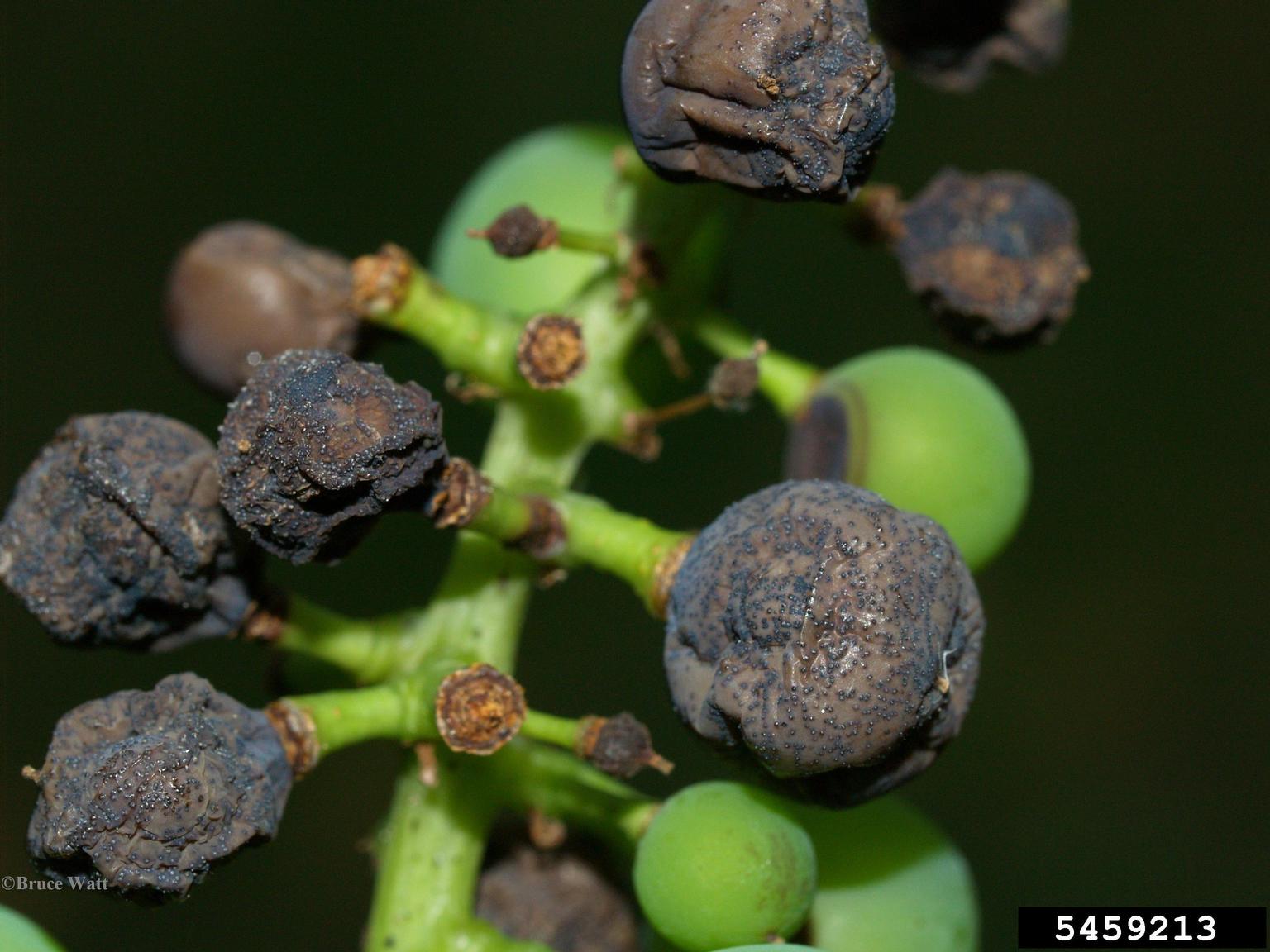What Is Black Rot On Grapes: Learn About Black Rot Grape Treatment


Growing grapes in the home garden is a labor of love. All the training and pruning and years and years of waiting for the first batch of grapes can be a lot to bear for any grower. When grape black rot ruins your harvest, you may want to throw in the towel. Fear not! There is black rot grape treatment, and, with some effort, you can defeat this merciless fungal disease.
What is Black Rot on Grapes?
Black rot of grapes is a fungal disease that persists in grapevines for many years without treatment. The earliest signs of disease appear as yellow circular lesions on young leaves. As these lesions spread, they brown and sprout black fungal fruiting bodies that look similar to grains of pepper. With advancing disease, lesions may girdle the petiole of individual leaves, killing them. Eventually, the fungus spreads to the shoots, causing large black elliptical lesions. Although leaf symptoms are annoying, the real damage from grape black rot comes from fruit symptoms. In many cases, fruits are about halfway grown before they start to show signs of infection -- the same small brown lesions on leaves will begin to appear on grapes. These areas soften, sink, and rot in just a few days and what remains of the fruit shrivels up into a tiny, hard raisin-like fruit, mummy covered in fungal fruiting bodies.
How to Save Grapes with Black Rot
Grape black rot is difficult to stop once it has taken hold of growing fruit. Many gardeners would consider this year's crop a lost cause and work toward preventing a recurrence of the disease. The best time to treat black rot of grapes is between bud break until about four weeks after bloom; treating outside of this window is likely to end in frustration. However, if you want to try, captan and myclobutanil are the fungicides of choice. Prevention is key when dealing with grape black rot. During your fall clean-up, make sure that all mummies have been removed from the vine and all plant material on the ground below is destroyed. Prune out any and all areas with lesions; grapevines can handle a severe pruning -- when in doubt, cut it out. If leaves appear the following spring with new lesions, remove these immediately and start a spray treatment program with one of the above-listed fungicides.
Gardening tips, videos, info and more delivered right to your inbox!
Sign up for the Gardening Know How newsletter today and receive a free copy of our e-book "How to Grow Delicious Tomatoes".

Kristi Waterworth was a regular contributor to Gardening Know How for many years, answering countless queries on plant pests and diseases.
-
 12 Lush Alternatives To A Lawn For Sustainable Spaces
12 Lush Alternatives To A Lawn For Sustainable SpacesAlternatives to a lawn are beautiful and also beneficial to your local ecosystem and its pollinators. Explore our top picks for plants to replace grass.
By Tonya Barnett
-
 Types Of Tomatoes Explained: Explore The Many Wonderful Shapes, Colors, Flavors, & Best Uses
Types Of Tomatoes Explained: Explore The Many Wonderful Shapes, Colors, Flavors, & Best UsesThe world of tomato varieties is vast and fascinating. Learn about the key types to grow in your garden, tailored to your preferences and space.
By Amy Grant